Posted by Wall Panels World on 16th May 2025
Japandi Interior Design | Home Style, Kitchen, Wall Panel
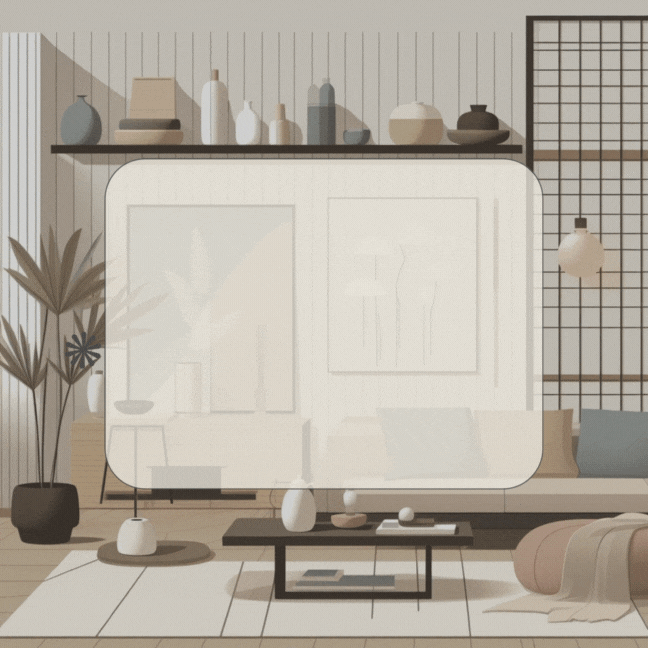
Origins and Philosophy 起源と哲学
The term "Japandi" emerged around 2016, but the connection between Japanese and Scandinavian design dates back to the late 19th century. When Japan opened its borders, Nordic designers discovered shared values in Japanese craftsmanship that aligned with their own appreciation for simplicity and natural beauty.
At its core, Japandi marries the Japanese concept of wabi-sabi (finding beauty in imperfection) with the Scandinavian notion of hygge (creating comfort and cosiness). This fusion results in spaces that are both minimalist and warm, with an emphasis on quality materials and handcrafted elements.
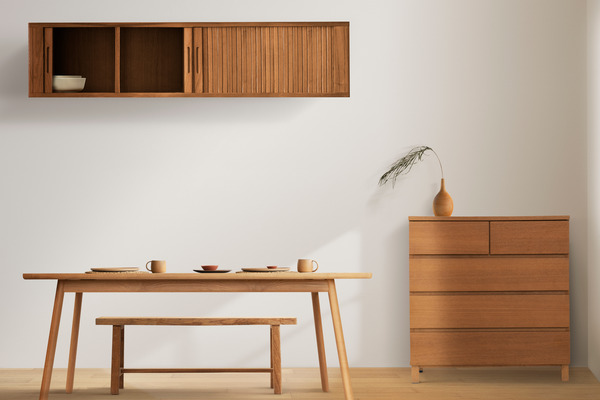
Japanese minimalism emphasises empty space (ma) and simplicity
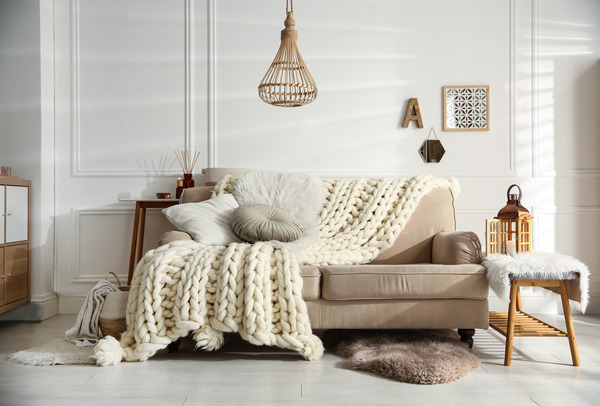
Scandinavian hygge brings warmth and comfort to the minimalist aesthetic
Unlike purely Japanese interiors, which can sometimes feel austere, or purely Scandinavian spaces, which might lean towards clinical brightness, Japandi achieves a balanced harmony. It combines the best elements of both traditions to create interiors that feel both sophisticated and liveable.
Key Characteristics
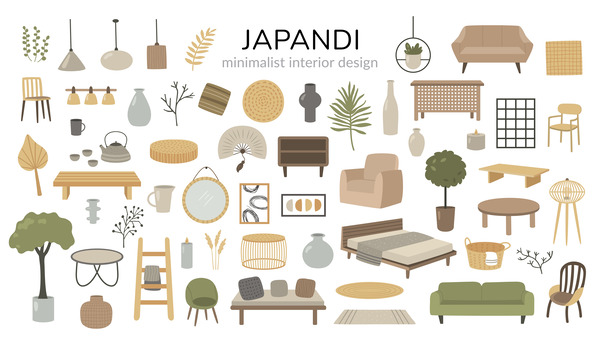
Minimalism
Japandi embraces the "less is more" philosophy, with clean lines and clutter-free spaces. Every item serves a purpose or holds meaning, creating rooms that feel open and tranquil. This minimalism isn't stark, however - it's softened with natural textures and carefully chosen decor.
Natural Materials
Both Japanese and Scandinavian design traditions value connection to nature. Japandi interiors feature abundant wood, bamboo, stone, linen, and other organic materials. These elements bring warmth and tactile comfort while creating a sense of harmony with the natural world.
Functionality
Every element in a Japandi space serves a purpose. From built-in storage that maintains clean lines to furniture that combines beauty with practicality, the style emphasises thoughtful design that enhances daily living while avoiding unnecessary ornamentation.
Craftsmanship
Japandi celebrates quality craftsmanship and handmade elements that show the maker's touch. This aligns with the Japanese concept of wabi-sabi, which finds beauty in imperfections, and the Scandinavian tradition of skilled woodworking and textile arts.
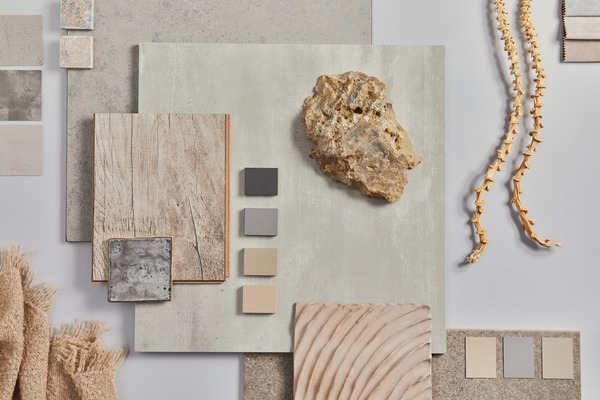
Colour Palette färgpalett
The Japandi colour palette draws inspiration from nature, favouring muted, harmonious tones that create a sense of calm. Unlike vibrant colour schemes that demand attention, these subdued hues allow the textures and forms of the space to take centre stage.
Typical Japandi Colours
Soft White
#FFFAFA
Muted Beige
#E0D6D4
Warm Greige
#CEC0B5
Pale Stone
#E6E4E0
Sage Green
#BAB888
Soft Charcoal
#323D43
While neutrals dominate, Japandi isn't devoid of colour. Muted versions of natural hues like sage greens, clay terracottas, and soft blues can appear as accents. These colours are never vibrant or overwhelming, instead offering subtle depth that complements the overall serenity of the space.
Wall Treatments in Japandi Design
Walls provide the perfect canvas for expressing Japandi's core principles of simplicity, natural materials, and subtle texture. Far from being bland backgrounds, wall treatments in Japandi interiors add depth and interest while maintaining a sense of calm.
Wagoya Residence: Japandi Principles in Practice
The Wagoya Residence, designed and built by architect-led design build firm Alloi, embodies Japandi principles through its thoughtful integration of Japanese craftsmanship with modern design sensibilities. The name itself - "Wagoya" meaning "Japanese frame" - speaks to its conceptual foundations.
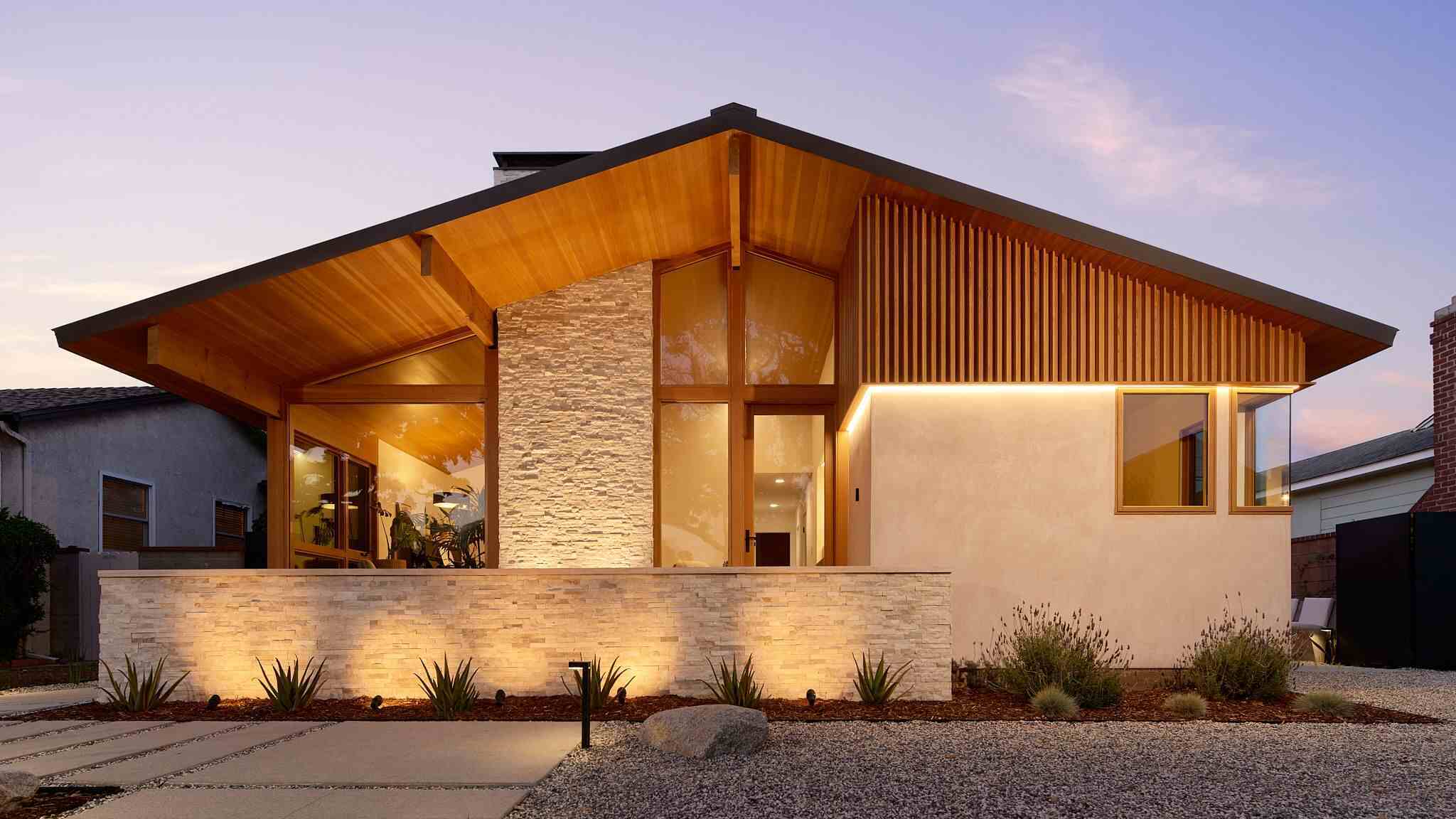
The residence's name, Wagoya (meaning 'Japanese frame'), speaks directly to its conceptual roots: natural materials, exposed wood joinery, serene spatial sequencing, and a minimalist palette.

The large open living room features a striking steel and glass façade, merging interior and exterior spaces. Natural light floods the living area, creating a sense of spaciousness and tranquility.
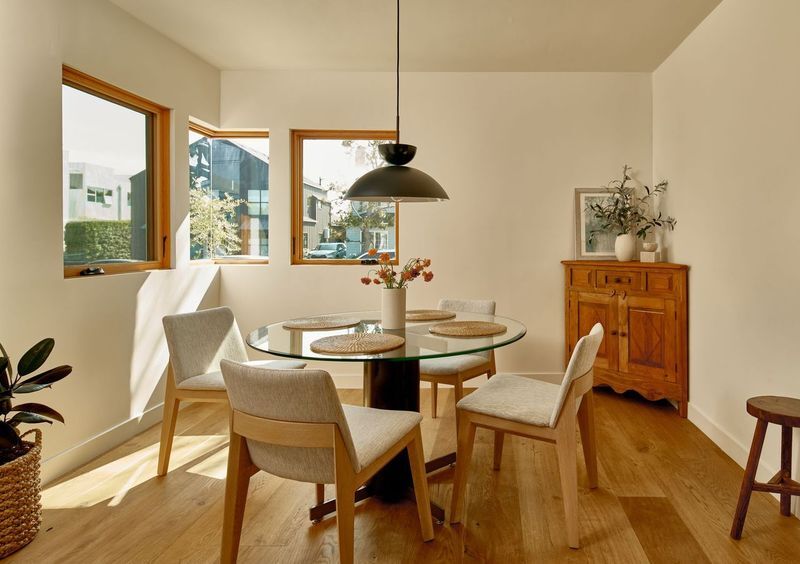
Positioned strategically to allow the southwestern sun to flood the room, sunlight dances through, casting shadows and creating a dynamic interplay between light and shadow throughout the day.
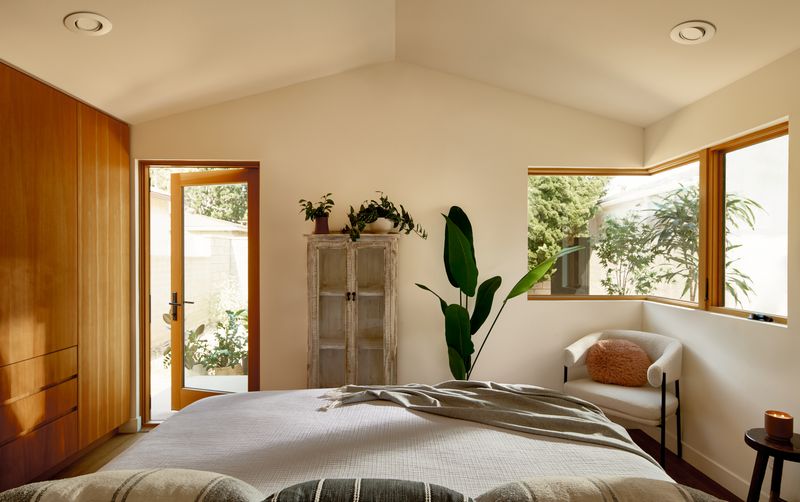
The warm-toned wood door, opening to reveal the stunning vistas of lush Southern California native landscaping, establishes a seamless connection between the interior and outdoor surroundings.
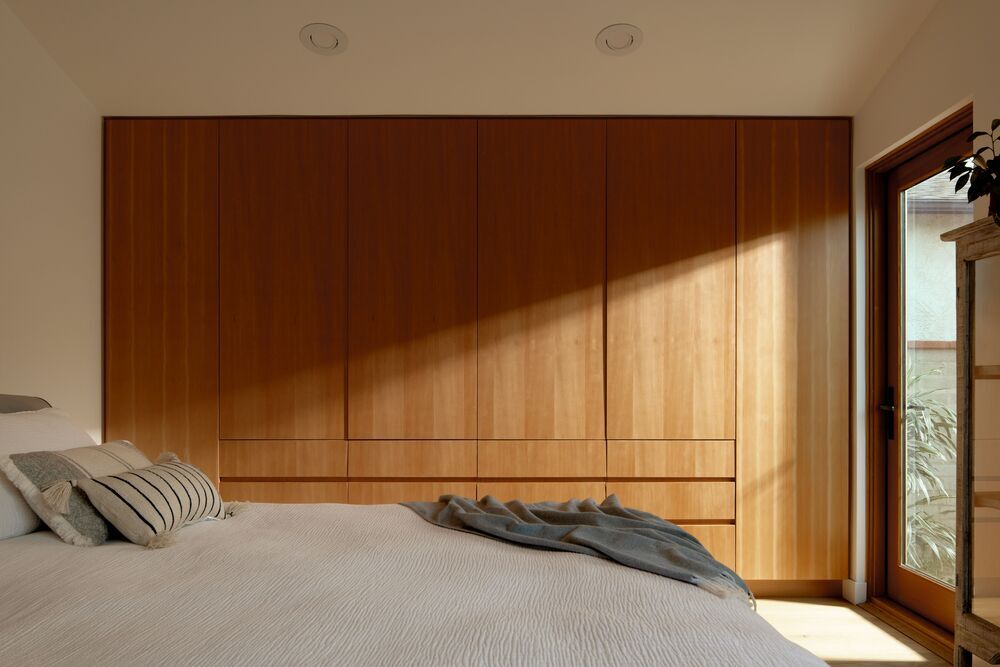
The well-crafted wardrobe in the primary bedroom features vertical grain wood panels, offering both visual texture and sophistication. With touch-to-open and soft-close hardware, it provides seamless storage.
"Japanese culture delivers a sense of connection to nature, the body and mind which adds value to all human beings."
- Marcos Santa Ana, AIA CPHD GC, founder of Alloi
Images courtesy of Alloi / Nils Timm.
Modern Japandi Kitchen Transformation
This kitchen renovation by Next Stage Design + Build exemplifies how Japandi principles can transform a functional space into one that balances beauty and practicality. The before and after images demonstrate the power of applying Japandi design elements to create a more harmonious, open environment.

Before: The kitchen sink wall featured traditional cabinetry and limited workspace.
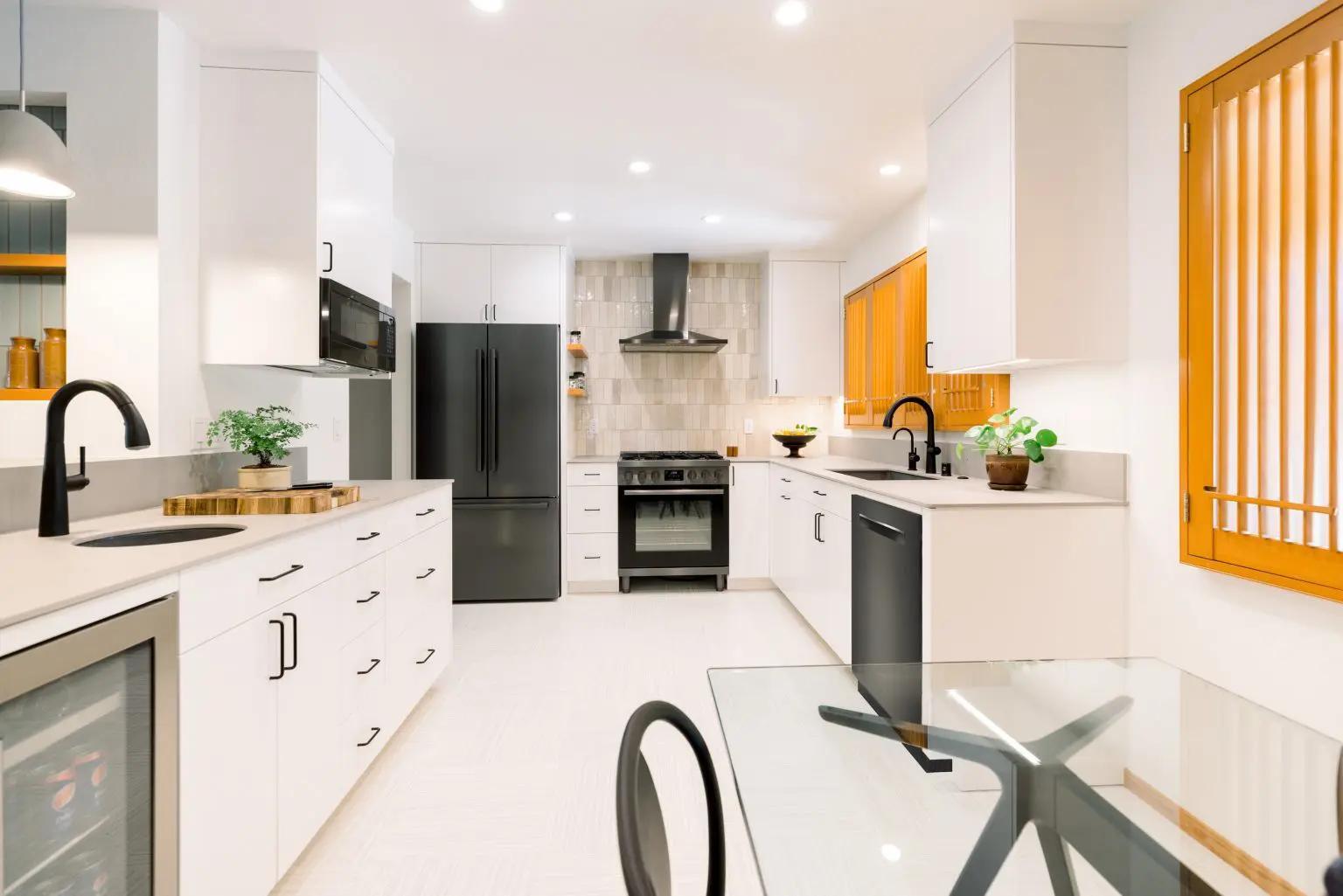
After: The renovated sink wall showcases clean lines, warm wood tones, and a minimalist yet functional design.

Before: The original kitchen had limited sightlines and felt closed off with upper cabinetry and a peninsula.

After: The Japandi kitchen now features open sightlines, warm wood tones, and a more spacious, airy feeling.
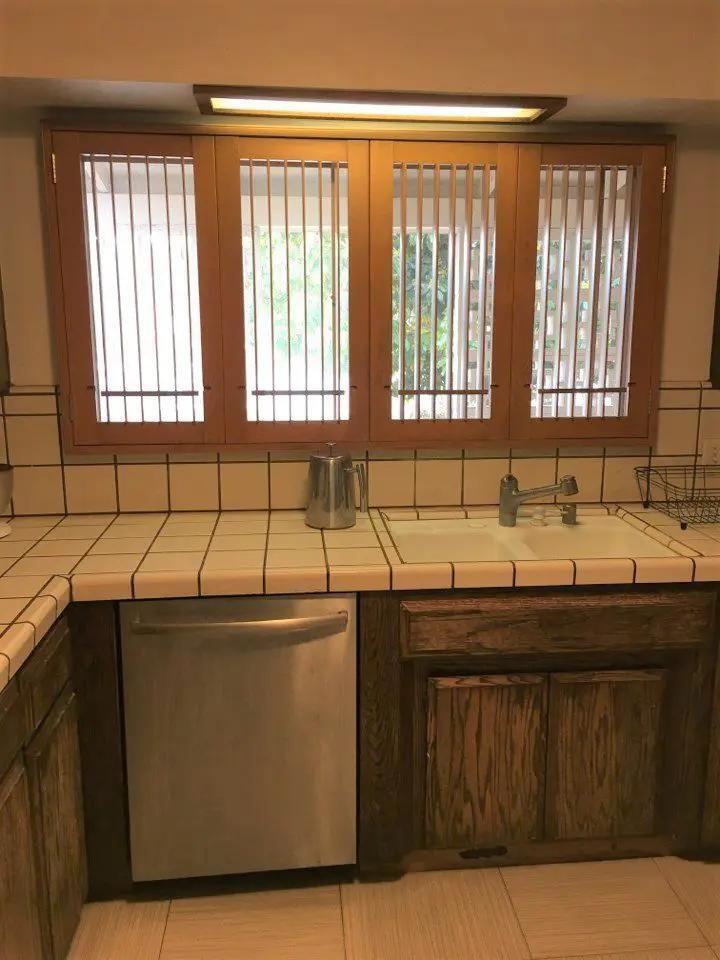
Before: The microwave and refrigerator area lacked cohesion and visual harmony.
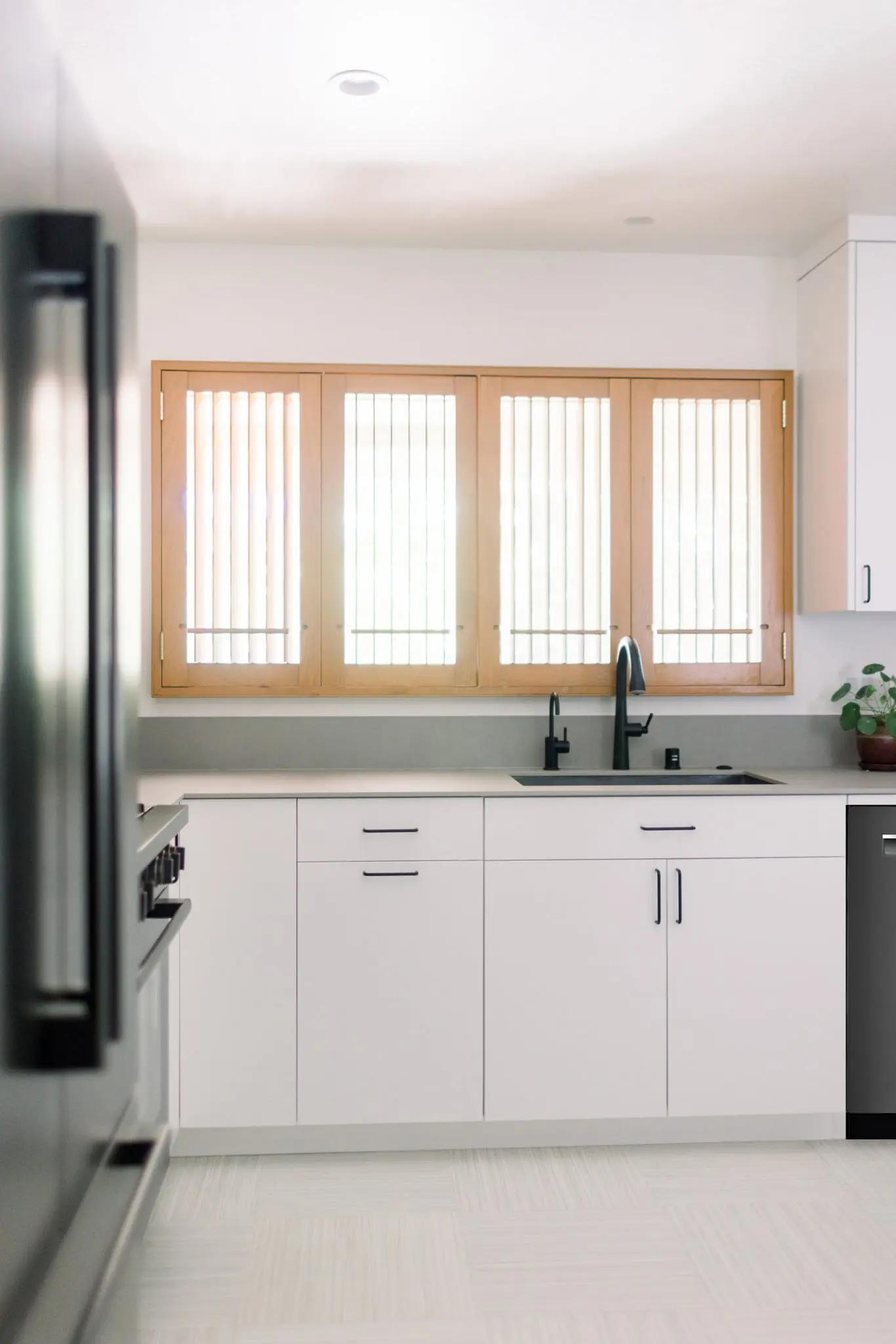
After: The renovated area integrates appliances seamlessly with warm wood accents and clean lines.
Japandi Kitchen Design Principles
- Open sightlines and reduced upper cabinetry create a sense of spaciousness
- Soft neutrals, warm woods, and matte finishes for a timeless look
- Intentional design that supports functionality while maintaining clean aesthetics
- Layered lighting (ambient, task, accent) to create warmth and highlight textures
- High-quality materials that balance beauty with practicality
Kitchen design by Joy Allen, CCIDC certified designer and Design Manager at Next Stage Design + Build.
Sustainable Japandi Living
This Palo Alto, California project demonstrates how Japandi design principles naturally align with eco-friendly and sustainable living goals. With its emphasis on natural materials, timeless aesthetics, and quality craftsmanship, Japandi creates spaces that are both beautiful and environmentally responsible.
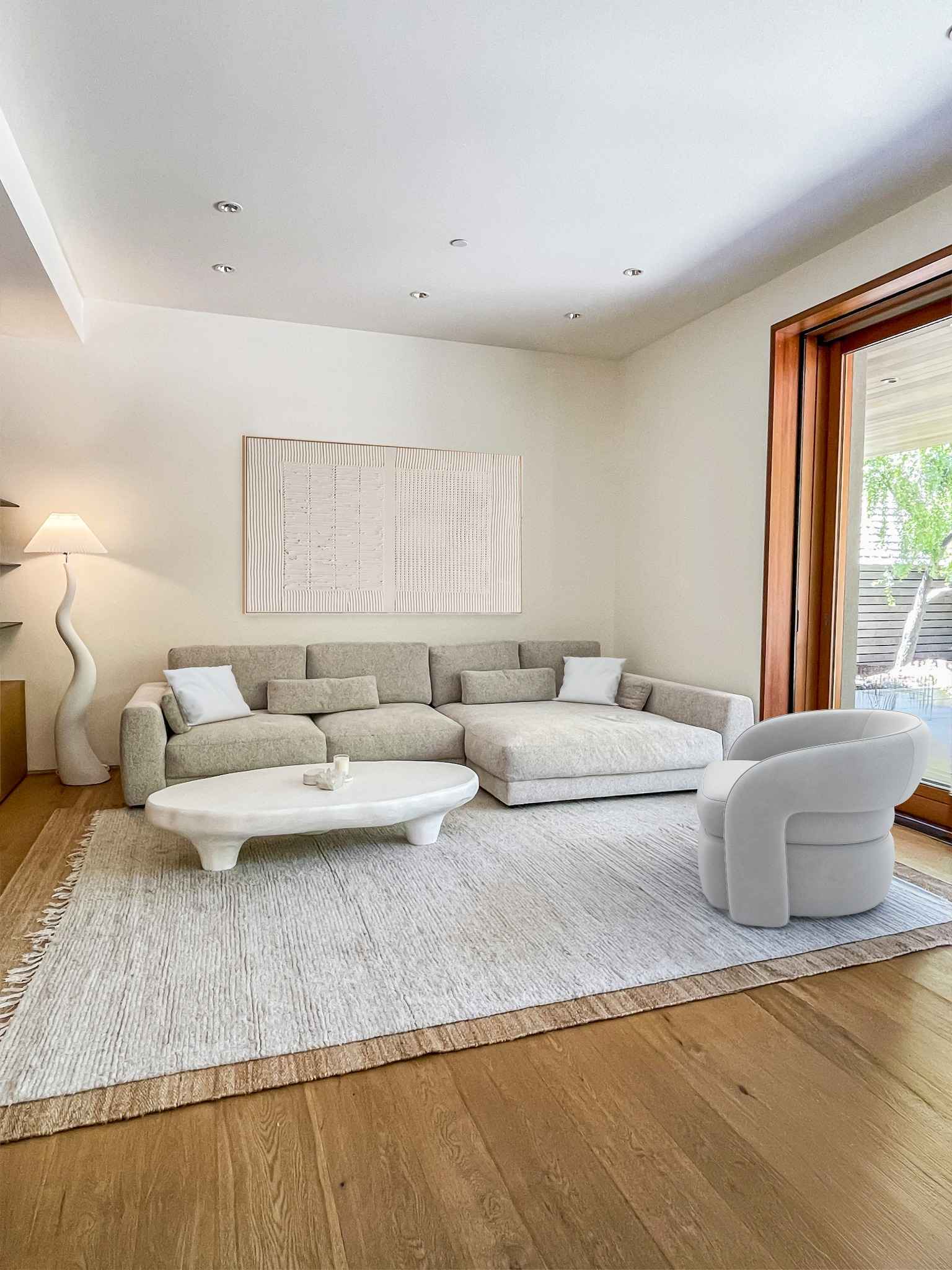
The living room showcases Japandi's signature clean lines, neutral palette, and emphasis on natural materials.
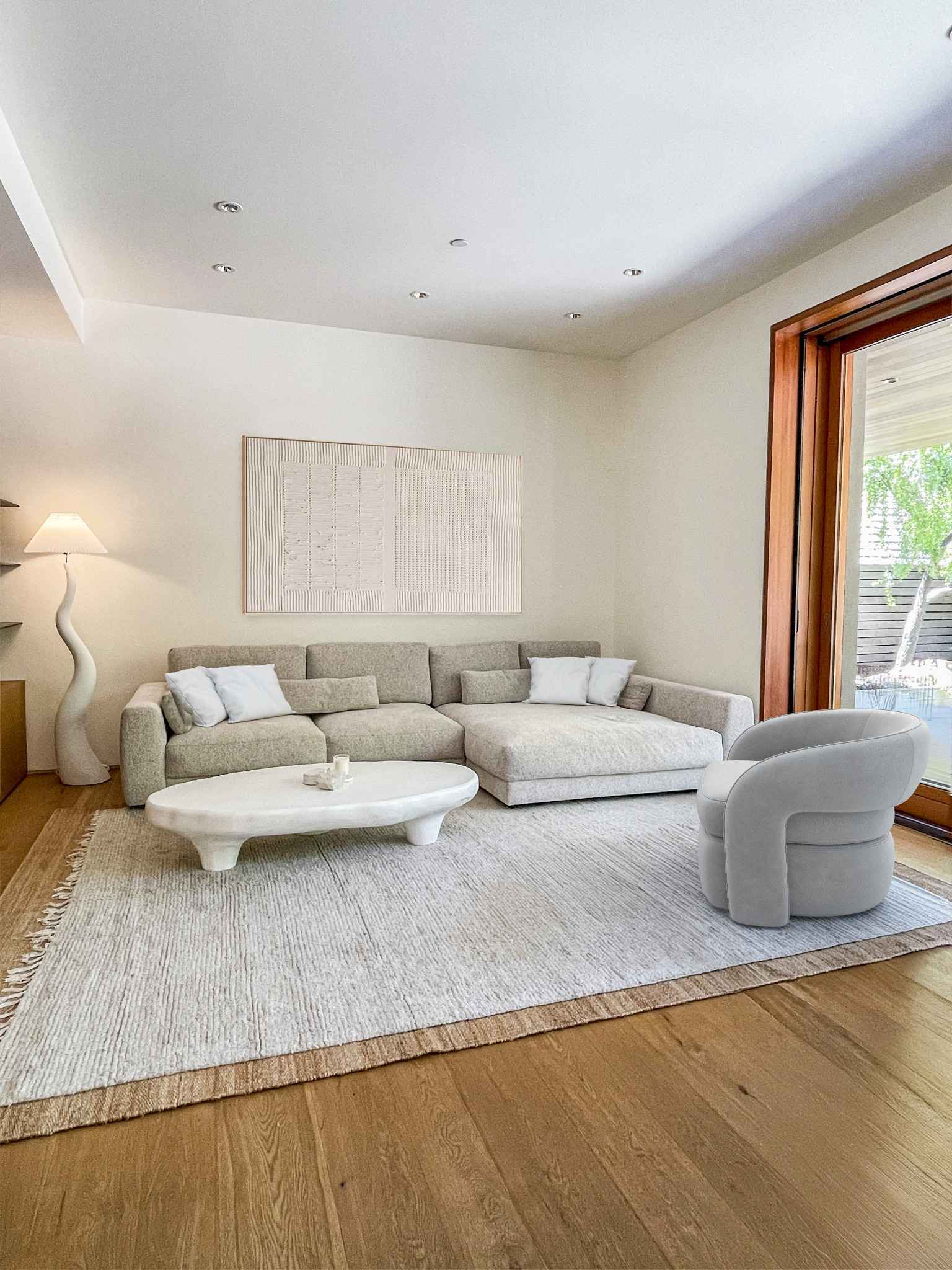
Soft textiles and a muted colour palette create a serene yet inviting atmosphere.

The dining area features responsibly sourced wood and an open, airy layout.
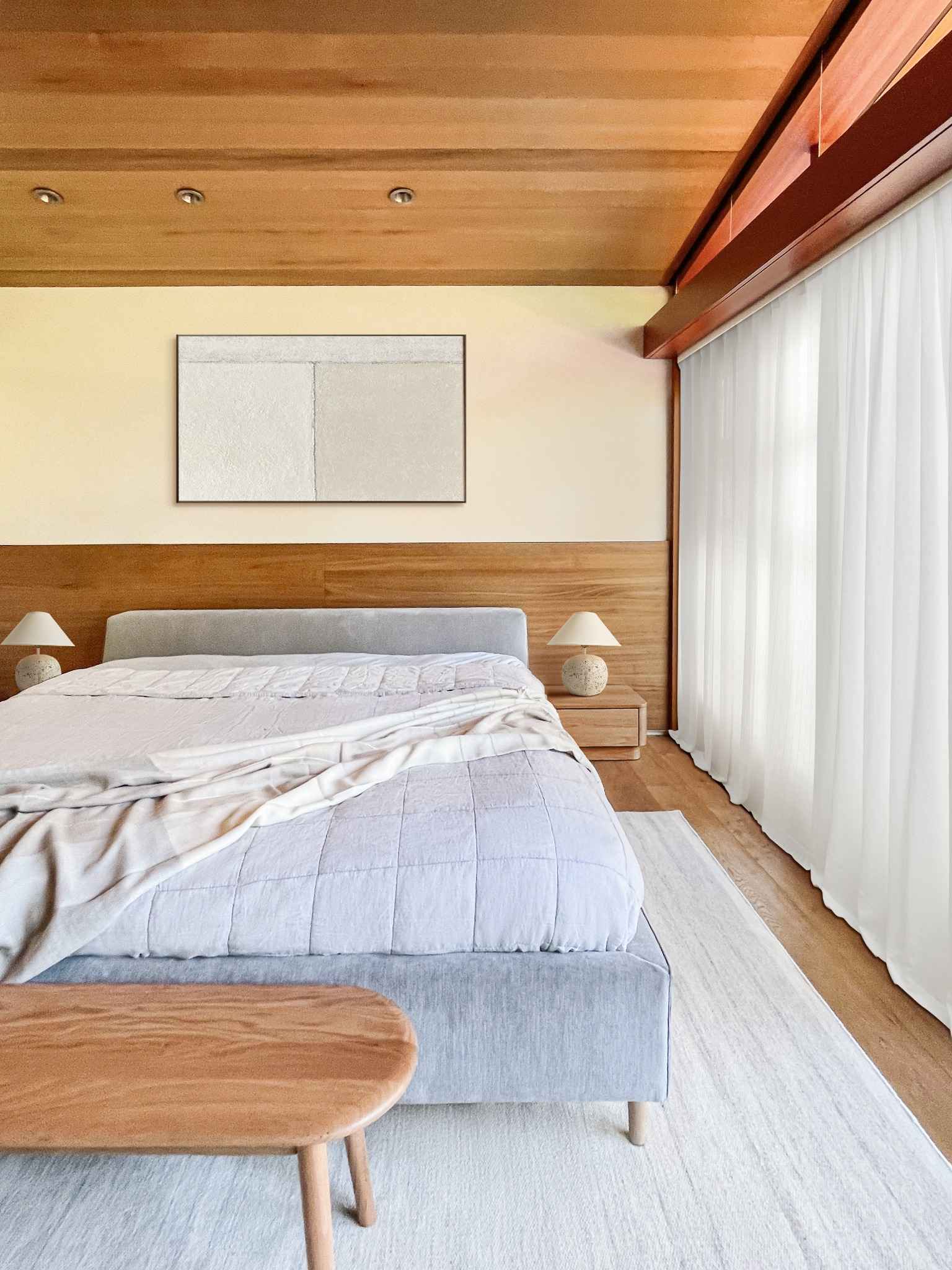
The primary bedroom balances minimalism with comfort through natural materials and soft textiles.

Simple, functional bedside elements create a clutter-free sleeping environment.
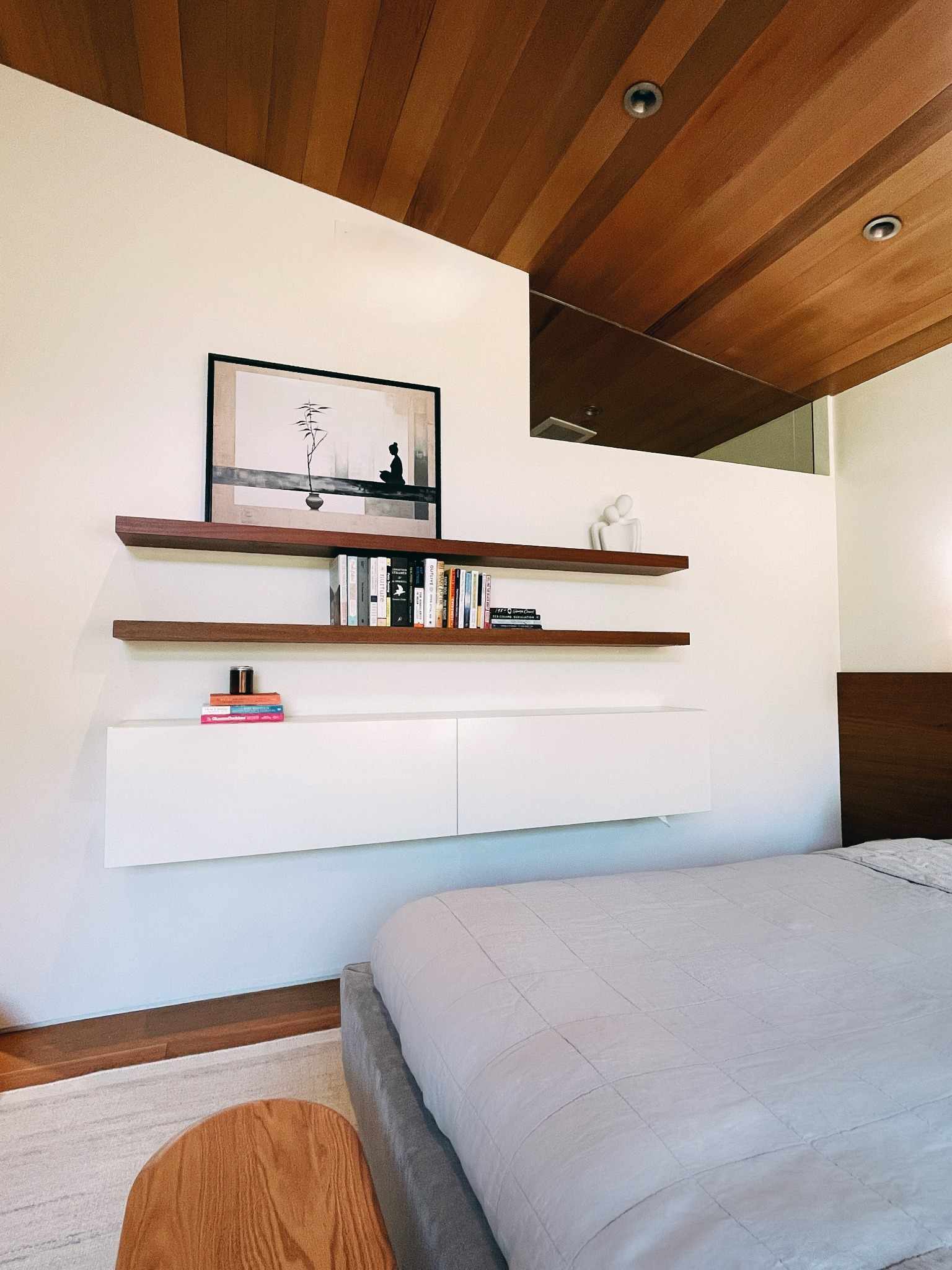
Minimalist wall shelves and carefully chosen artwork add character without overwhelming the space.
"I loved working on this Japandi project in Palo Alto, CA because the style lent itself to our goals of using natural materials, solid responsibly sourced woods and non-toxic items."
- Erica Reiner, Sustainable Designer
Project by Erica Reiner, Eco Method Interiors.
Japandi in 2025: Current Trends
As of 2025, Japandi design continues to evolve while staying true to its core principles. Recent trends show deeper integration of biophilic elements, a focus on sustainability, and creative use of textured surfaces that add depth to spaces without compromising their serene quality.
Common Misconceptions
Creating Your Own Japandi Interior
Implementing Japandi design in your own space doesn't require a complete renovation. Start with these foundational steps to gradually transform your home into a serene, balanced sanctuary:
- Declutter mindfully. Begin by removing unnecessary items and keeping only what serves a purpose or brings joy. This creates the clean foundation necessary for Japandi style.
- Introduce natural materials. Incorporate wood, stone, bamboo, linen, and other organic elements. Even simple changes like adding a wooden tray or linen cushions can shift the feeling of a space.
- Consider wall treatments. Walls provide the perfect canvas for Japandi style. Wood panels, textured plaster, or simply repainting in a muted, natural tone can transform the feeling of a room.
- Balance minimalism with warmth. Add soft textiles like wool throws, linen cushions, or a jute rug to bring cosy comfort to clean-lined spaces.
- Bring nature indoors. Houseplants, branches in a simple vase, or natural materials connect your interior to the outdoors, a fundamental aspect of Japandi philosophy.
Conclusion
Japandi design offers more than just an aesthetic - it presents a philosophy of living that values simplicity, quality, and connection to nature. As we've seen through various examples and expert insights, this harmonious blend of Japanese and Scandinavian influences creates spaces that feel both serene and inviting.
Whether through the thoughtful integration of wood slat wall panels, the selection of natural materials, or the careful curation of furnishings, Japandi interiors respond to a growing desire for homes that support wellbeing and mindful living. This design approach proves that beauty can coexist with functionality, and minimalism needn't sacrifice warmth.
As Japandi continues to evolve, it remains true to its foundational principles while adapting to contemporary needs - a testament to the timeless appeal of thoughtful, nature-inspired design.
Japandi-Inspired Wall Panels
Explore our collection of wall panels that perfectly complement the Japandi aesthetic. These products combine natural materials, clean lines, and thoughtful craftsmanship to help you create your own serene space.



